Introduction and Concept of Wild Unknown Tarot Deck
Menu of Contents
I. Origin of the Wild Unknown Tarot deck
Major Arcana Wild Unknown Tarot Deck
Major Arcana Wild Unknown Tarot Deck
1. Wands Suit Wild Unknown Tarot
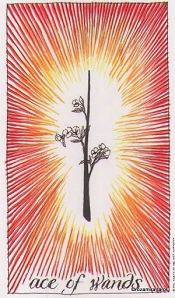 Ace of Wands Ace of Wands | 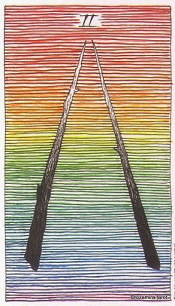 2 of Wands 2 of Wands | 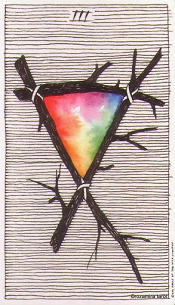 3 of Wands 3 of Wands |  4 of Wands 4 of Wands |
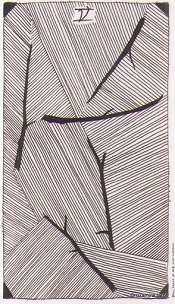 5 of Wands 5 of Wands | 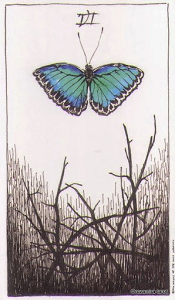 6 of Wands 6 of Wands | 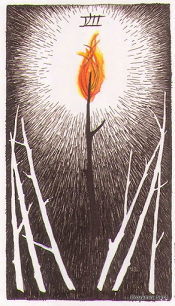 7 of Wands 7 of Wands | 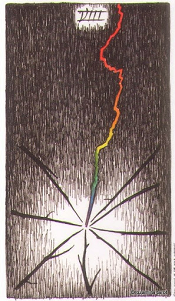 8 of Wands 8 of Wands |
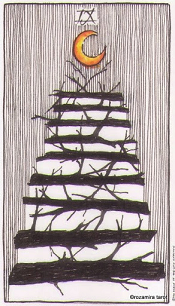 9 of Wands 9 of Wands | 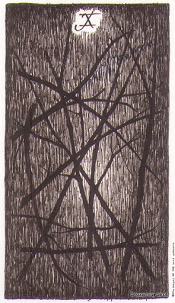 10 of Wands 10 of Wands | 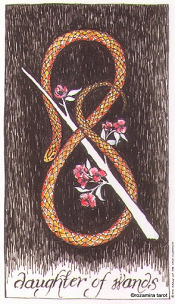 Daughter of Wands Daughter of Wands | 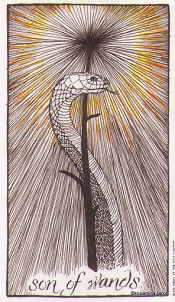 Son of Wands Son of Wands |
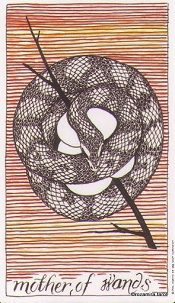 Mother of Wands Mother of Wands | 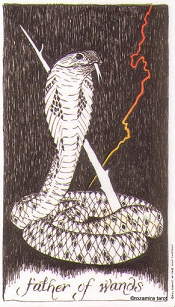 Father of Wands Father of Wands |
2. Cups Suit Wild Unknown Tarot
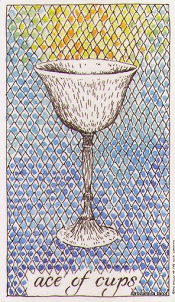 Ace of Cups Ace of Cups | 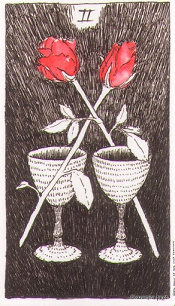 2 of Cups 2 of Cups | 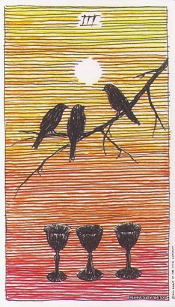 3 of Cups 3 of Cups | 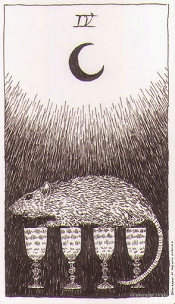 4 of Cups 4 of Cups |
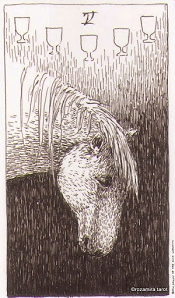 5 of Cups 5 of Cups | 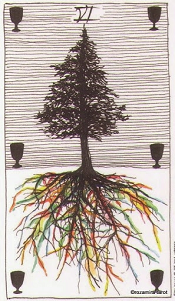 6 of Cups 6 of Cups |  7 of Cups 7 of Cups | 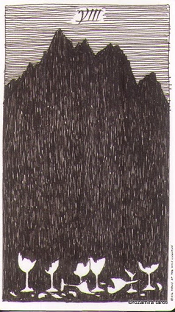 8 of Cups 8 of Cups |
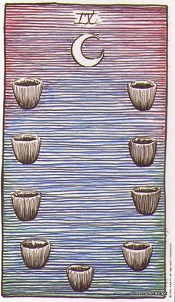 9 of Cups 9 of Cups | 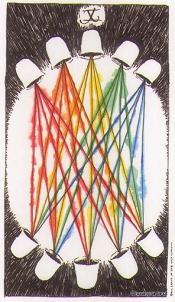 10 of Cups 10 of Cups |  Daughter of Cups Daughter of Cups | 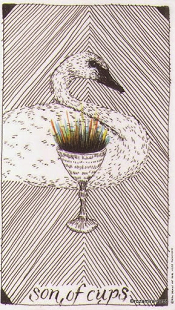 Son of Cups Son of Cups |
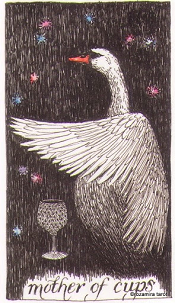 Mother of Cups Mother of Cups | 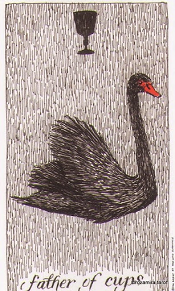 Father of Cups Father of Cups |
3. Swords Suit Wild Unknown Tarot
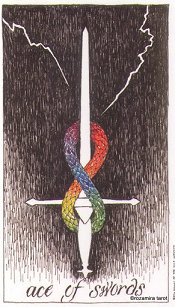 Ace of swords Ace of swords |  2 of swords 2 of swords | 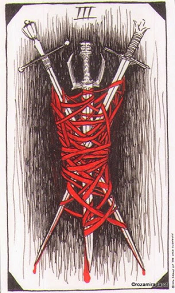 3 of swords 3 of swords | 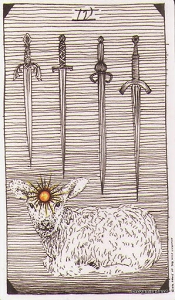 4 of swords 4 of swords |
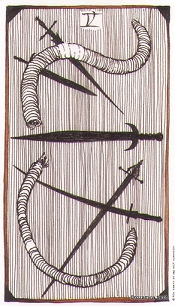 5 of swords 5 of swords | 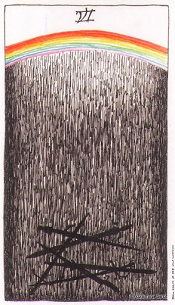 6 of swords 6 of swords | 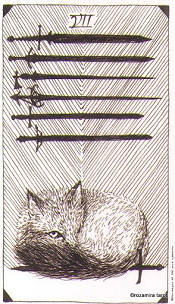 7 of swords 7 of swords | 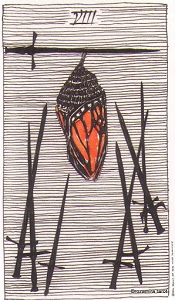 8 of swords 8 of swords |
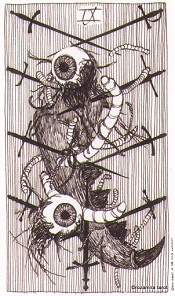 9 of swords 9 of swords | 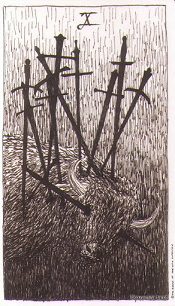 10 of swords 10 of swords | 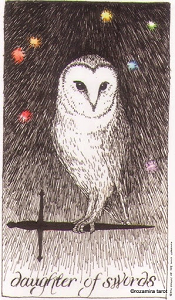 Daughter of swords Daughter of swords | 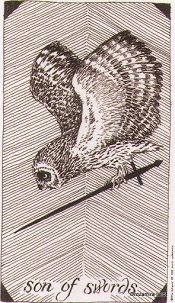 Son of swords Son of swords |
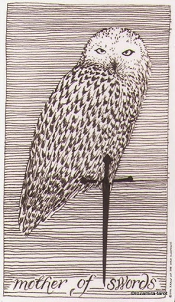 Mother of swords Mother of swords | 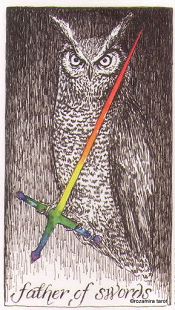 Father of swords Father of swords |
4. Pentacles Suit Wild Unknown Tarot
II. Introduction and concept of Wild Unknown Tarot Deck
The Wild Unknown Tarot is a Marseille-based Tarot deck as the Thoth Tarot card deck. Shuffling this deck is a little different from what we are used to. The cards are made from quality thick cardboard so it may take some time for readers to get used to them. The images on the cards look simple but contain complex meanings about the natural world. Animals, trees, plants, and insects make for a beautifully alluring deck. The accompanying 200-page guidebook also makes it easy for Tarot readers to use and interpret the cards, providing readings and diving into Tarot topics and images.
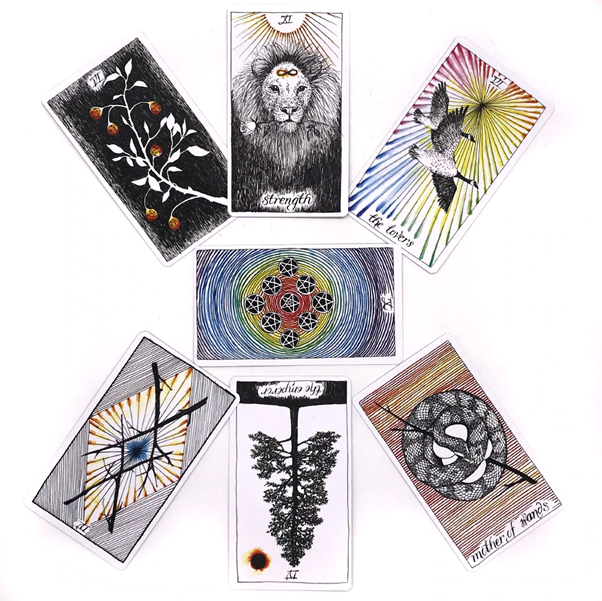
The deck’s creator, Kim Krans, is an artist, author, and designer of the New York Times bestseller The Wild Unknown Tarot. She is not only the pioneer of the new Tarot movement but also the one who redefines it for the twenty-first century. For readers looking for contemporary concepts, this is more than just an ordinary Tarot deck, it has become a resonating guide for people all over the world, inspiring them to share countless images of their readings, creative awakenings, tattoos, and art prints from the deck.
Each of the 78 cards in The Wild Unknown Tarot is a work of art that explores the mysteries of the natural world and the animal kingdom. Hand-drawn by the author in a minimalist style, the striking images on the cards offer profound contemplation. The Wild Unknown guidebook is also a phenomenally revered work of art – a handwritten and fully illustrated book that guides the reader through shuffling and cutting Tarot cards, creating a unique experience and interpretation of each card.
III. Meaning and interpretation of the Major Arcana and Minor Arcana cards in The Wild Unknown Tarot
1. Major Arcana cards in The Wild Unknown Tarot
The Major Arcana cards in Wild Unknown Tarot (also commonly called Trump cards) form the basis of the Tarot deck and consist of 21 numbered cards and one unnumbered card (the Fool) like other Tarot decks. These cards represent spiritual enlightenment and describe the different states we encounter in our search for greater meaning and understanding in life. In this way, the cards serve as lessons of profound meaning. The meanings of Major Arcana cards outline the structure of human perception and thus hold the key to life lessons that accumulate over time. The images in the Major Arcana cards contain the wisdom of many cultures and mystical beliefs.
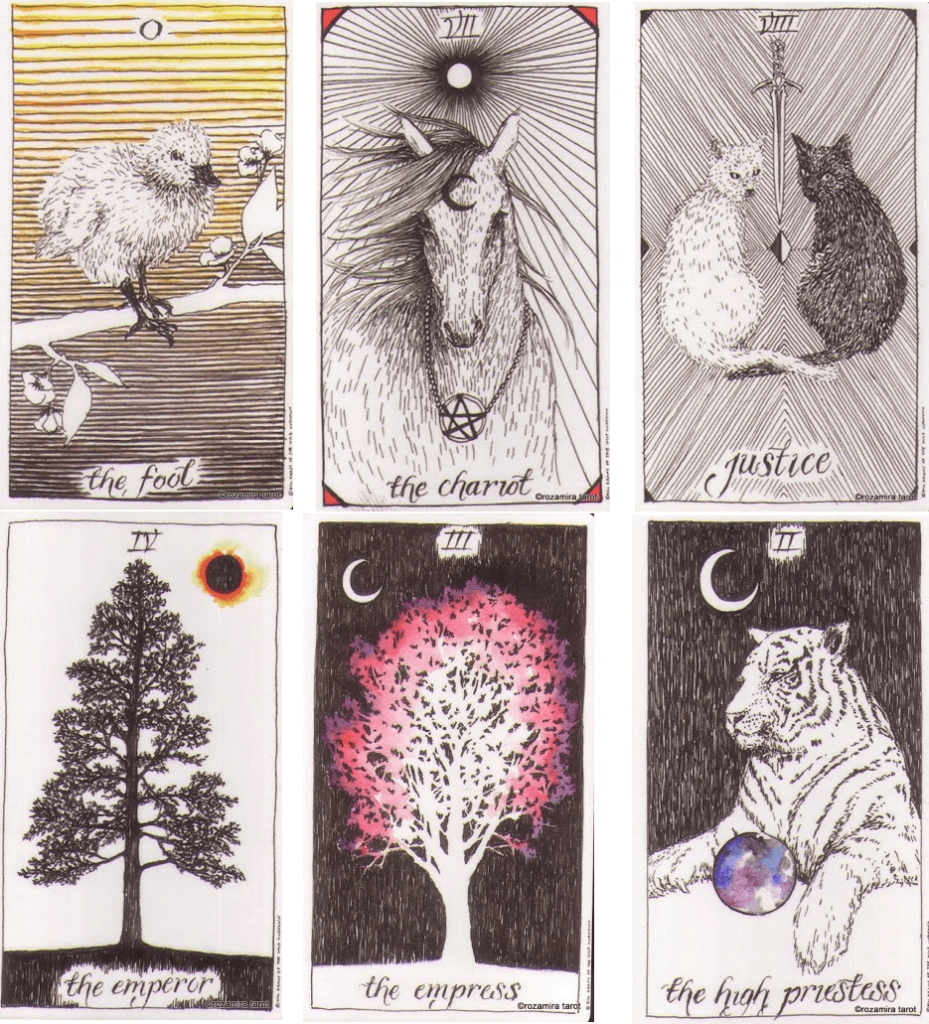
In his book Pocket Guide to Tarot, Alan Oken argues that the 22 cards of the Major Arcana are the same as the Mandala of Tarot. Mandala is detailed circular-like images representing the Universe or Self (Ego) drawn on the center of the canvas and used for study and spiritual samadhi by Tibetans. Therefore, it is important to study the images in the Major Arcana cards and reflect on their messages. Look behind the simple keywords and traditional meanings of the Tarot cards, and look for meanings that belong to you. As your knowledge of symbols grows, your understanding of what the card represents will deepen.
The Major Arcana cards in Wild Unknown Tarot also represent Carl Jung’s archetypes – directional, uniform patterns of influence as an inherent part of human nature. They are themes that characterize, describe, and symbolize the states of our psyche by which we aspire to be whole and balanced human beings. Along this journey, we will encounter many challenges, face adversity, work, make decisions and fight against opposing forces. Every step on this path brings us closer to enlightenment. This is often seen as The Fool’s journey.
When a Tarot spread shows the majority of the Major Arcana cards, the querent is seen to be experiencing life-changing events that have lasting effects. There are important lessons that he/she must heed in order to progress further in their spiritual and personal search. However, if there are many reversed Major Arcana cards, this will imply that the querent is not paying focus on these important life lessons and must return to the previous card’s lesson first before continuing to read other cards. It is still possible to perform readings using only 22 cards from the Major Arcana. This method is often used for readings involving mental self-awareness or when you need a deeper insight from the Collective Unconscious.
2. Minor Arcana cards in The Wild Unknown Tarot
a. The Wands suit
The Wands suit in the Wild Unknown Tarot represents the element Fire. The meanings of the Wands cards are related to primordial energy, spirituality, inspiration, determination, strength, intuition, creativity, ambition and expansion, original thoughts, and “seeds” through which life will arise. They relate to a spiritual level of awareness and reflect what is important to you at the core of who you are. They address what resonates with you – personality, ego, enthusiasm, self-concept, and energy both internally and externally.
The Wands cards also refer to all the things you do during the day that keep you busy, such as work, housework, or outside activities. The Wands suit is associated with movement, action, initiative, and giving new ideas. They can be a sign of an endless “Ideas List” or “To-Do List” whereby the querent has multiple projects that keep him/her busy. The negative aspects of the Wands suit (for instance, when the Wands cards are reversed) include delusions, conceited behavior, impulsivity, lack of direction or goal, or feelings of meaninglessness.
When referring to time in a Tarot spread, the Wands suit usually represents Summer or weeks. If using a normal playing card deck, the Wands suit is converted to Clubs. Regarding personality, Wands represent Fire zodiac signs which are Leo, Sagittarius, and Aries. People represented by Wands (characterized by the Court cards) are active, charismatic, warm, and religious. If there are a majority of Wands cards in a reading, you can be sure that the querent is looking for solutions to major ideological problems or is in the early stages of development. He/she may also be looking for higher and more meaningful goals in his/her life and will want to learn more about his/her motivations and resources.
b. The Cups suit
The Cups suit in the Wild Unknown Tarot represents the element of Water. The meanings of the Cups cards relate to the emotional spectrum of awareness, love, feelings, relationships, and connection. The Cups suit is the embodiment of emotions, expressing feelings and the role of emotions in relationships with others. The Cups cards imply that you are thinking with your heart rather than with your head, and thus showing your natural and habitual reactions to circumstances. Cups cards are also associated with creativity, romance, fantasy, and imagination.
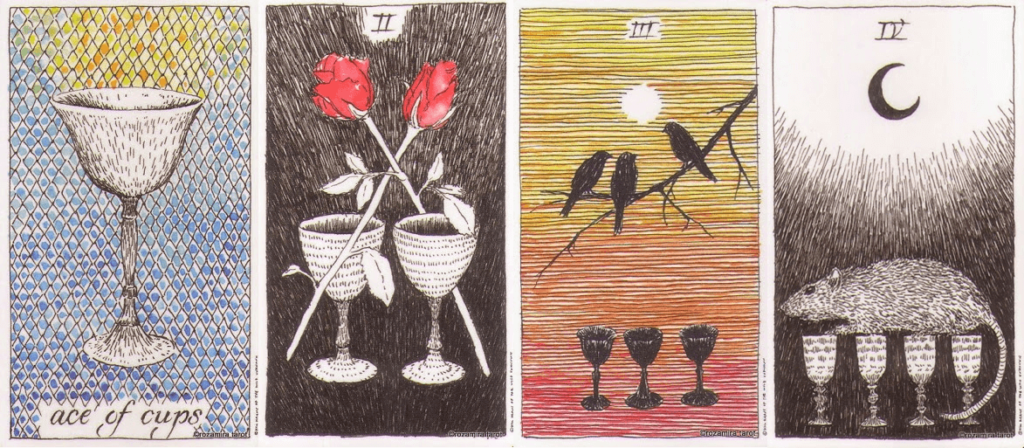
The negative aspects of the Cups suit (such as when the Cups cards are reversed) include being too emotional or completely disengaged and carefree, having unrealistic wishes and delusions about what is possible. These can be repressed emotions, helplessness, or a lack of ability to express yourself and be creative. The Cups suit usually represents the West direction and Autumn. If using a regular playing card deck, Cups suit is converted to Hearts.
Regarding personality, people represented by the Cups (characterized by Court cards) are emotional, artistic, humanitarian, and creative. They are connected to their own emotions and will draw energy from what they feel inside. They are said to correspond to the Water zodiac signs which are Pisces, Cancer, and Scorpio. Water also symbolizes the subconscious mind and reason. If there is a majority of Cups cards in a reading, you can be sure that the querent is looking for something that deals primarily with emotional conflicts, love issues, and emotions.
c. The Swords suit
The Swords suit in the Wild Unknown Tarot represents the element of Air. The meanings of the Swords cards relate to action, change, force, power, oppression, ambition, courage, and conflict. Actions can be constructive and/or destructive, sometimes leading to violence. This suit can also imply hatred, war, enemies, and of all suits, this is considered the most powerful and dangerous.
The suit of Swords deals with the level of mental awareness that is centered on thought and intellect. The Swords cards reflect the quality of thought expressed in ideas, attitudes, and beliefs. The Swords suit also has two sides (like a double-edged sword) and in this way, it symbolizes the skillful balance between wisdom and strength and how these two elements can be used for either good or bad purposes. As such, the Swords cards must be balanced by the spirit (Wands) and feeling (Cups). The negative aspects of the Swords suits (as when the Swords cards are reversed) include anger, guilt, harsh judgment, lack of compassion, and mental and verbal abuse. When referring to time in a reading, Swords suit usually refers to Winter, Spring, or months. If using a regular deck of playing cards, Swords suit is converted to Spades.
Regarding personality, the Swords cards represent the Air zodiac signs which are Gemini, Libra, and Aquarius. People represented by Swords (characterized by the Council cards) are intelligent, thoughtful, reasoned, and are excellent communicators. They are rational and want to experience the world by understanding and analyzing what is happening around them. On the contrary, they can be ruthless, domineering, confrontational, and tough. If there is a majority of Swords cards in a reading, you can be sure that the querent is looking for what is primarily concerned with spiritual conflicts and controversies, and deciding must be given. In addition, there can also be much controversy or even violence in the present. Although the Swords cards can carry either many strong or negative messages, they also act as a warning about what is happening around you.
d. The Pentacles suit
The Pentacles suit in the Wild Unknown Tarot (also known as Coins or Disks) represents the element Earth. The meanings of the Pentacles cards cover the material aspects of life including work, business, commerce, property, money, and other forms of material possession. The positive aspects of the Pentacles include a manifestation, realization, demonstration, and flourishing. The Pentacles cards deal with the external or physical level of awareness and thus reflect circumstances of health, finance, work, and creativity. They represent what we think of the world around us – how we create it, shape it, transform it, and develop it. On a deeper level, the Pentacles suit is related to ego, self-esteem, and self-image.
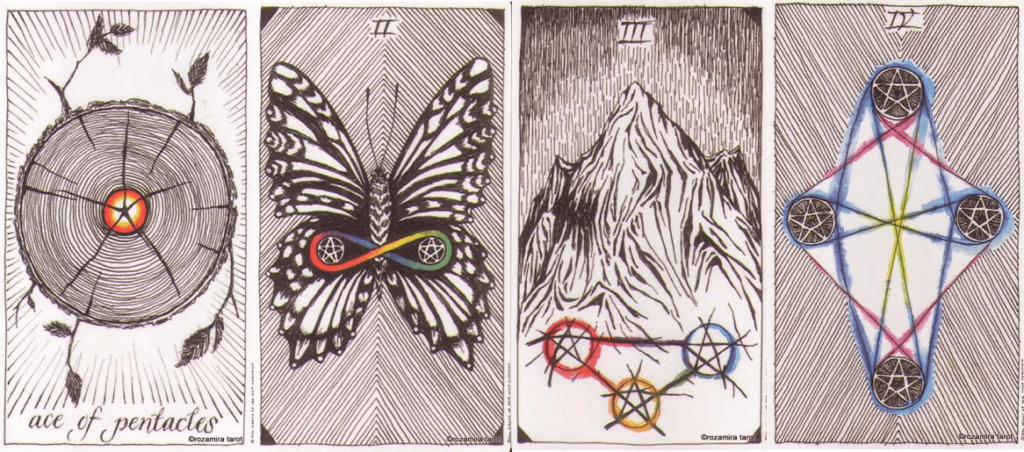
The negative aspects of the Pentacles suit (such as when the Pentacles cards are reversed) include possessiveness, greed, being too materialistic, being too spoiled, not exercising, not managing financially effectively, and being so focused on the career area that one forgets about other life priorities. Often, what is needed to combat these negative aspects is to return to one’s own nature and rediscover what really matters. In addition, these cards also imply that there are obstacles in the expression of ideas and plans, leading to a lack of success. Better goal setting and planning will be essential.
When referring to time in a reading, Pentacles suit usually refers to Autumn or years. If using a regular playing card deck, the Pentacles suit is converted to Diamonds.
Regarding personality, the Pentacles cards represent the Earth zodiac signs which are Taurus, Virgo, and Capricorn. People represented by Pentacles (characterized by the Court cards) are practical, business-minded, pragmatic, and generous. They are people of reasons and desire to experience the tangible and physical world. They connect through their senses and seek out experiences that are pleasurable and, at times, indulgent. If there is a majority of Pentacles cards in a reading, you can be sure that the querent is looking for solutions to problems that are mainly related to material conflicts, financial difficulties, and career and work-related issues.
3. Interpretation of the reversed Wild Unknown Tarot cards
We find that reversed cards are often described in dramatic terms such as “cheating”, “betrayal”, “divorce” and “scamming”. With these interpretations, it is not surprising that people are afraid of reversed cards and often choose not to use them at all. Fortunately, these reversed cards have a lot more positive meanings than these old-fashioned imposes.
To avoid anxiety when reading with negative and dramatic interpretations of reversed cards, we need to dig deeper into the ways these cards are understood. From there, we can use reversed cards effectively to provide ourselves and/or the querents with perceptive insights, constructive suggestions and advice, and renewed hopes. There are many methods to interpret a reversed Tarot card. Here are the eight most widely believed and useful methods that can be applied to every card in the Wild Unknown Tarot deck:
Traditional meaning: When first owning the deck, it will often come with a booklet (Little White Book). This book lists the traditional meanings of the Tarot cards and probably their meanings in reverse. Traditional (or upright) meanings are based on the original and have been revised by authors using later Rider Waite Smith, Etteilla, or Marseilles style decks. These meanings are quite similar to what we read on many free Tarot reading websites. For instance, the reversed Three of Wands is interpreted as hidden motives, doubts, betrayals, deceptions, one who disrupts by causing misfortune, the reward for labor. The advice here is to use the traditional meanings as a starting point. However, to generate meaningful insight for our querents, we will need to employ the other methods.
Opposite of the upright card: This is perhaps one of the most popular (simple) ways to interpret reversed Wild Unknown Tarot cards, by simply taking the opposite meaning of the upright card. For instance, the Ten of Pentacle card represents financial security, a stable home, and a successful career. The opposite of this will be financial insecurity, broken families, and threatened jobs due to rearrangement. What we really need to do here is be careful with this method as it can lead us to a lot of negative interpretations and can create needless fear and doubt, instead of creating hope and faith. We should consider other cards in the spread to help the querent figure out a way out of a predicament.
The card’s energy is increased or decreased: According to this method, the energy of the upright card will be either stronger or weaker. For instance, the Ten of Sword represents a painful ending, betrayal, and stabbing in the back. If the energy is weak, the reversed Ten of Swords can indicate a difficult period is coming to an end and the querent is beginning to heal past wounds. If the energy is boosted, the querent may be struggling to get out of a difficult period and still feel betrayed and hurt. Whether the energy is increasing or decreasing depends on the surrounding cards, the feedback of the querent, and our psychic abilities.
Return to the meaning of the previous card: This method originates from Paul Fenton-Smith in his book, Mastering The Tarot: A Guide To Advanced Tarot Reading And Practice, which is also one of the most popular methods. It gives hope and direction to the querent and is an easy interpretation of reversed cards for Tarot beginners. The basic principle is that the querent does not know the upright meaning of the previous card and therefore must return to this card before continuing reading cards. For instance, the reversed Two of Pentacles implies that in order for the querent to effectively manage his/her financial commitments, he/she needs to return to the Ace of Pentacles to set financial goals and make appropriate plans to achieve those goals. It is worth mentioning that when the Ace card is reversed, we need to go back to the Ten card, and when the Fool is reversed, we need to go back to the World. For the Court cards, the Father returns to the Son and the Mother returns to the Daughter. However, more often the reversed Court cards reflect an individual’s negative personality.
Locked energy: The energy of the upright card is locked or restrained in some way. For instance, the reversed Six of Wands might give that a lack of self-esteem and self-promotion is affecting our ability to lead to success. And the reversed Five of Cups suggests that we should not indulge ourselves to avoid a disappointing situation.
The postpone: Reversed cards can mean uncertainties related to the card itself. For instance, the reversed Eight of Wands suggests that the fast-moving plan is slowly coming to a standstill and we are starting to feel frustrated. The reversed Wheel of Fortune shows that a big project or change may be coming but we are having a hard time getting started.
Unconscious awareness: In readings, when we ask about the meanings we have understood, we often interpret a reversed card reversed as the querent is not aware of a specific implication. Accordingly, the energy of the card is still in the subconscious and has not been revealed to the querent.
A “No” reading. In a yes/no reading, a reversed card can simply mean “no”.
It takes years of effort to become a good Tarot reader. However, here are a few tips that can help figure out which method to use:
Only one method should be used: Send a message to a supernatural source before doing a reading about how we choose to read the reversed cards, for instance: “I will interpret all reversed cards in this reading in a way that the energy is locked.” In this way, the supernatural source will carry out our message through the cards involved, that we are interpreting them in a consistent way.
Go by instinct: Sometimes we “know” what the card means. Our intuition may be directing us to a particular implication.
Consider the other cards in the spread: Look for themes across the different cards in our spread. For instance, the reversed Four of Cups combined with the Hermit could suggest that the querent is lonely for too long and is closed off from the world around him/her. Conversely, the reversed Four of Cups combined with the reversed Nine of Cups can imply that the querent has lost his/her inner connection and those external opportunities are also not being fully met.
Experience: Sometimes, we really need experience. For example, when the reversed Three of Cups appear in a relationship reading, it almost implies that there is a third person involved in the relationship, be it the querent himself/herself. To help build experience, we should seek feedback from our querent to understand how the cards manifest in his/her life. We should practice this not only continuously and directly after each reading, but several weeks or months later. Find out how a particular card comes to life for the querent and remember how it was viewed and perceived. For those who are still in the process of learning and have not read cards to others, a Tarot guide on the subject may help a lot. By doing these two things, we will be able to build a set of stories around each card that we can then use in future readings.
Here are 3 steps that help practice reading reversed Wild Unknown Tarot cards:
Step 1: Randomly select a card from the deck and apply each method as outlined above to create different meanings for that card.
Step 2: Think of three different situations involving reversed cards. For instance, the reversed Four of Swords may mean that we were working on our own and not allowing ourselves to rest or relax, as a result, we fell ill and had to take a week off work. Include these situations in our interpretation.
Step 3: During the next week, reflect on the energy of the chosen reversed card and identify a real-life situation that occurred during this week to depict the card. Also, record these situations in a notebook.
IV. The recommended spread for The Wild Unknown Tarot
The Tarot Celtic Cross reading is one of the most commonly used spreads by Tarot readers, but also one of the more complex to interpret. Although most Tarot beginners usually use the Celtic Cross reading to understand the Tarot, it requires an in-depth knowledge of the positions and relationships across these positions in order to derive all the implications of the spread. Below is an overview of the chart, positions in the Celtic Cross reading, and the relationships between these positions to get a complete look at the spread and how to apply it to the Wild Unknown Tarot:
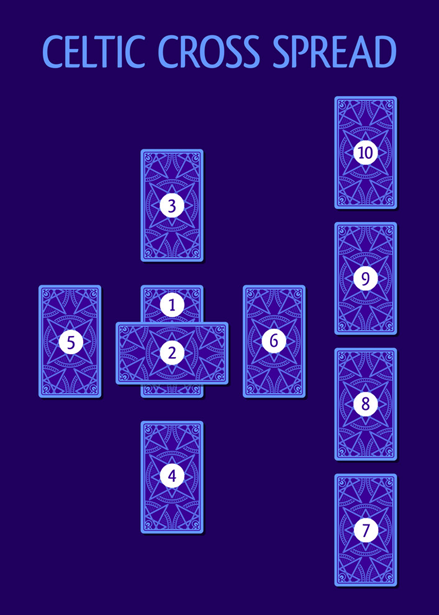
Card 1: Present. This card represents what is happening to the querent at the present time. The card also reflects the querent’s state of mind and how he/she might perceive the situation.
Card 2: Challenge. This card represents the immediate challenges or problems that the querent is facing. If this problem is solved, life will become much easier. Even if drawing a positive card in this position, consider it carefully as it still presents a challenge.
Card 3: The past. This card represents the events leading up to the current situation and can give some indication of how the challenge is coming.
Card 4: Future. This card represents what might happen in the following weeks or even months. This is not the end result, it is simply the next step of the journey.
Card 5: Above (Conscious). This card reflects goals, passion, or the best outcome according to the querent’s situation. Those are what the querent is aiming for to solve the problem.
Card 6: Below (Subconscious). This card reflects what is hidden in the querent’s subconscious and goes deeper into the main background of the problem. It represents the underlying feelings and dispositions associated with the situation and can indicate what is really driving the querent. This card can bring an unexpected message to the querent, especially if he/she is not deeply connected to what is inside him/her (if the reversed card is in this position, it could imply an “unknown” to the querent).
Card 7: Advice. This advice card pays attention to everything that is going on in the querent’s life and presents a suggestion for how to deal with current challenges.
Card 8: External influences. This card highlights people, energies, or events that will affect the outcome of the question and are beyond the control of the querent.
Card 9: Hopes and/or fears. This is perhaps one of the most difficult positions to interpret. Always think that our hopes and our fears are closely related so that they are what we are hoping for and/or maybe what we are afraid of, and maybe that is not going to happen. Sometimes it is helpful to draw another card to clarify the meaning and read the two together.
Card 10: Final outcomes. This card represents the core of the situation and whether/how the problem will be resolved. It gives results based on the querent’s current sequence of actions. And of course, if this card leads to an undesirable outcome, it is still in the querent’s free will to make the necessary changes to his/her situation. Note that there are different versions of the Celtic Cross reading, including differences in the arrangement of the cards. Choose the spread that works best for the situation.
To have an overview of the relationships of the Celtic Cross reading and apply it for the Wild Unknown Tarot, first, let’s picture the Celtic Cross divided into 2 main parts – the Circle/Cross on the left side (Card 1 to 6) and the Staff on the right side (Card 7 to 10).
The Circle/Cross represents what is going on in the life of the querent at the time of the spread. This part is created by two cross lines – the central one (Card 1 and 2) overlapped within a larger cross (Card 3 to 6). The small cross represents the heart of the problem – the most important thing about the querent at the time of the spread. The larger cross consists of 2 lines that overlap the small one.
The horizontal line (Card 1, 3, and 4) shows the time moving from the past on the left side to the future on the right side. The vertical line (Card 1, 5, and 6) is the querent’s perception going from the subconscious (unconscious) below to the cognitive/conscious thought above. These 6 Tarot cards work together to create the internal and external environment at the time of the reading.
The Staff represents the relationship between the querent and the environment in which they operate, and may give a better indication of what is happening in a broader context.
Next, let’s start looking at the different combinations of cards that make up a “story”:
Compare the Above (Card 5) and Outcome (card 10). Similarly, is there a link between what the querent wants to happen and what will happen? Is the querent “go along” or “against” the situation? If noticing Card 5 and 10 are opposite, the querent will need to think hard about how to produce the results he/she wants or see the Advice card (Card 7) for more instructions.
Compare the Future (Card 4) and the Outcome (Card 10). How do events in the future contribute to or influence the final outcome? Does the querent need to control these events in a particular way to produce consistent results? Again, refer to the Advice card (Card 7) for more details.
Compare the Below (Card 6) and Hope/Fear (Card 9). If having trouble interpreting the Hope/Fear card, see what is happening on a subconscious level within the querent (Card 6). Is there something in his/her subconscious that makes him/her fear or hope? If the reversed cards appear in these positions, it seems that the querent is not aware of what is driving his/her subconscious and how this is affecting him/her in the “real world.”
Compare the Advice (Card 7) and the Outcome (Card 10). Will the querent accept the outcome? Refer to the Advice card to see what actions the querent can take for a more positive outcome. Similarly, consider possible events in the Future (Card 4) so that the querent can effectively control these.


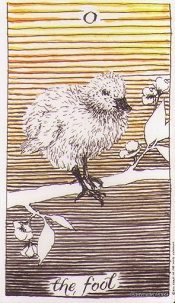
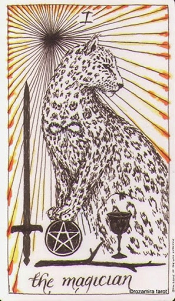
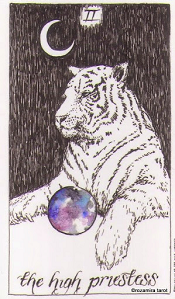
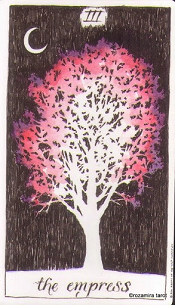
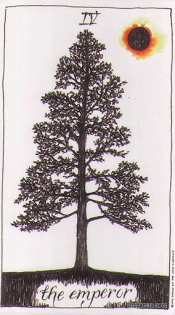
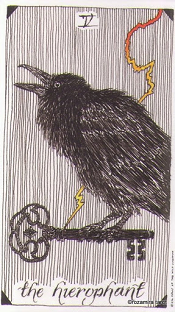
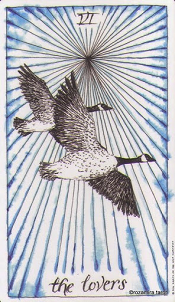
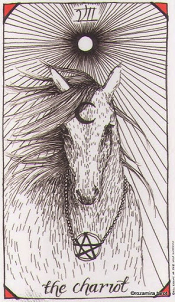
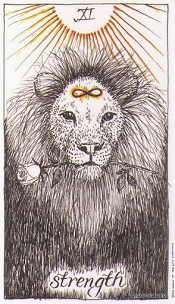
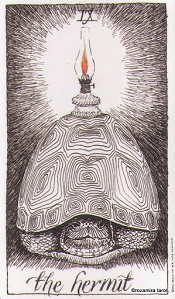
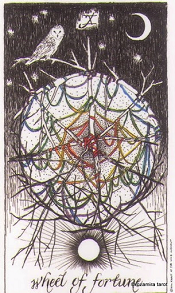
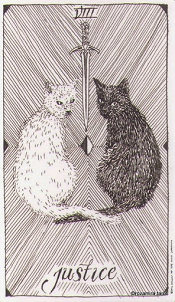
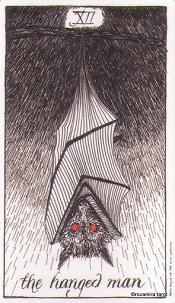
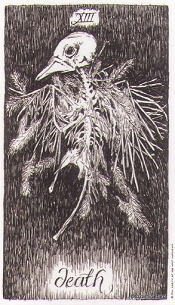

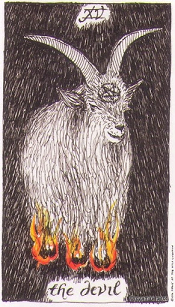
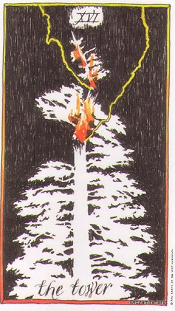
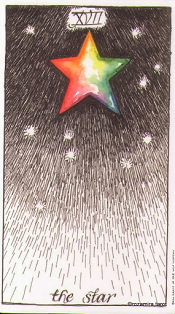
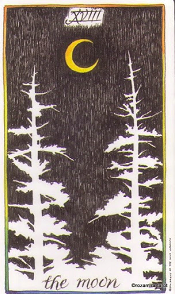
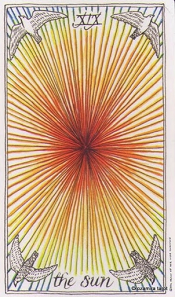
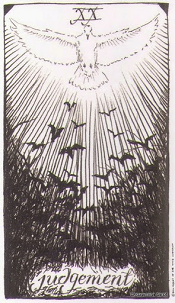
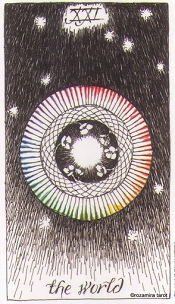
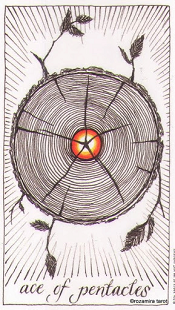 Ace of pentacles
Ace of pentacles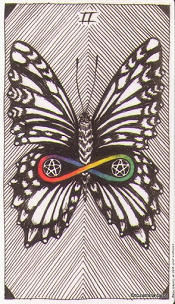 2 of pentacles
2 of pentacles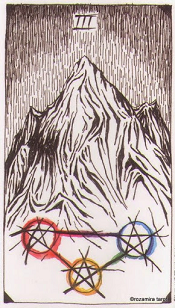 3 of pentacles
3 of pentacles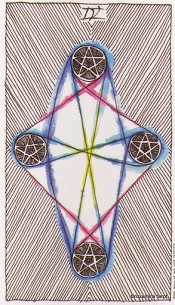 4 of pentacles
4 of pentacles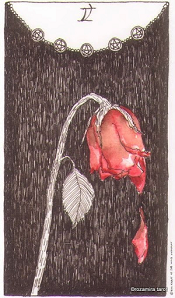 5 of pentacles
5 of pentacles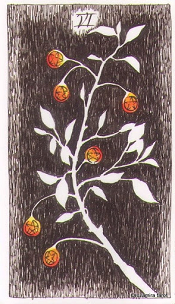 6 of pentacles
6 of pentacles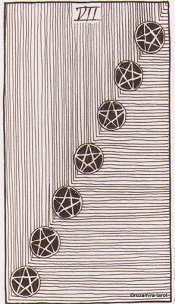 7 of pentacles
7 of pentacles 8 of pentacles
8 of pentacles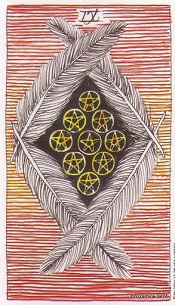 9 of pentacles
9 of pentacles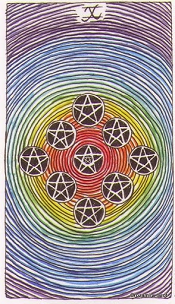 10 of pentacles
10 of pentacles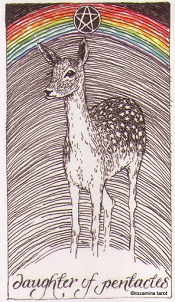 Daughter of pentacles
Daughter of pentacles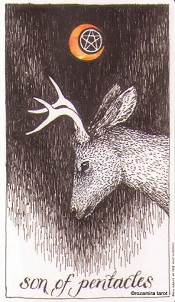 Son of pentacles
Son of pentacles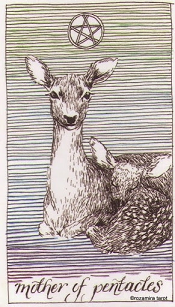 Mother of pentacles
Mother of pentacles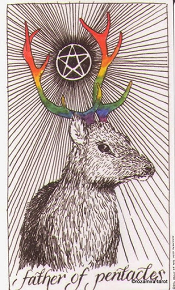 Father of pentacles
Father of pentacles